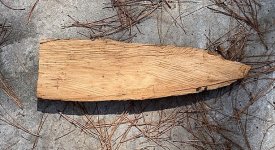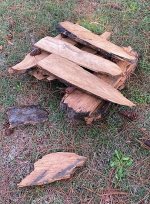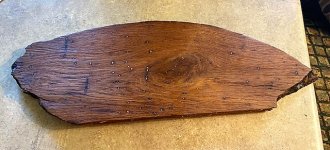Redman54
Senior Member
Just thought I would throw this out there, I've been finding these "logs" all in the river swamp on our property. They are different sizes, but all share the same end characteristics, ie they look like they have been cut with an axe. I took a few home that I was able to carry and ripped them with a chainsaw. them planed them down. The wood has absolutely no smell. Any idea's what they may be? Old lops...or perhaps beavers. Thanks for the help.










